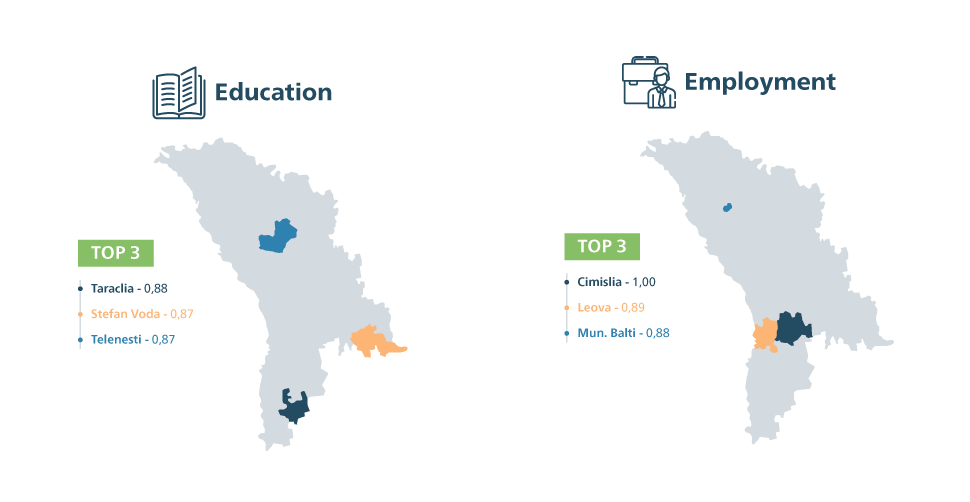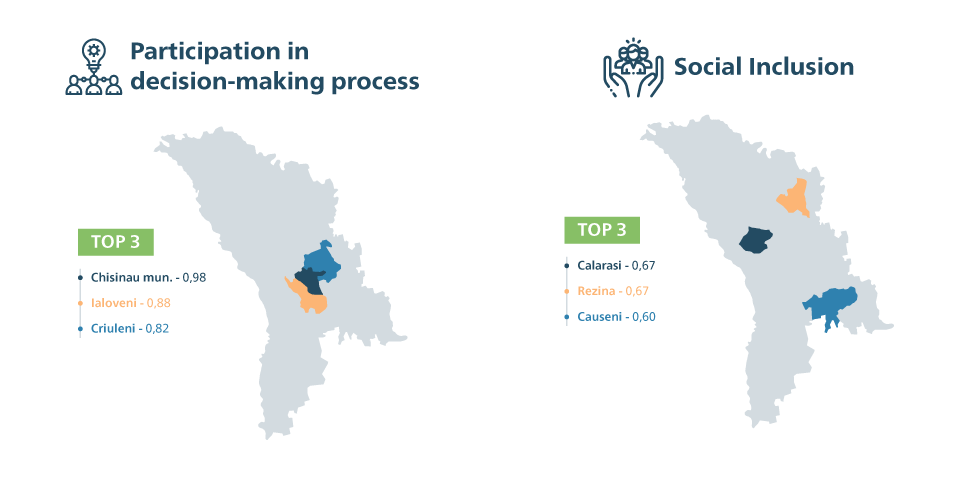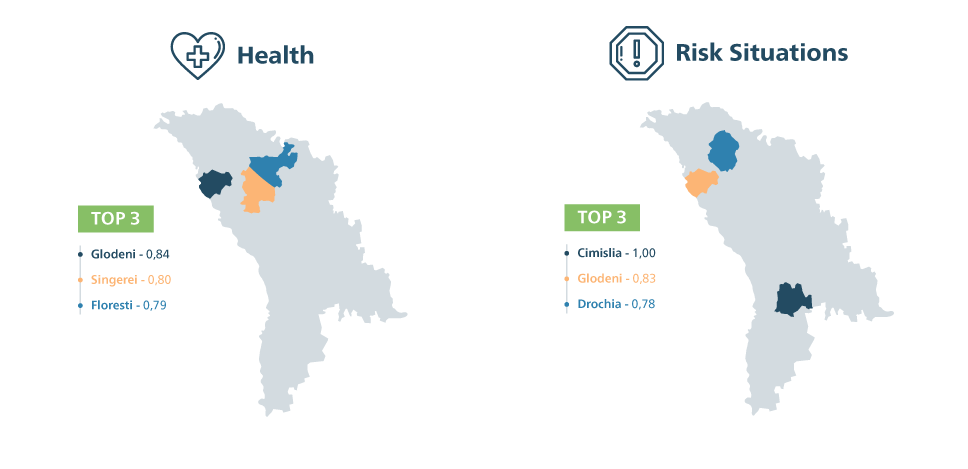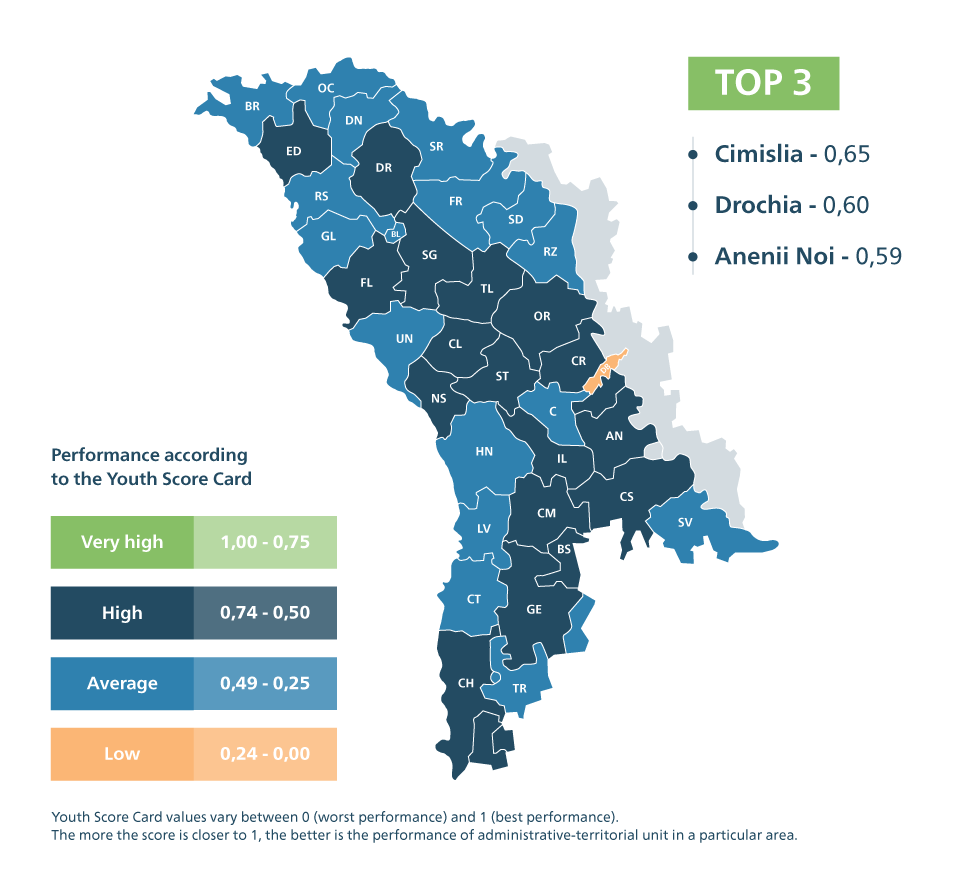Chisinau, 24 January - The composite index on youth development – the Youth Score Card – was launched by the Independent Think Tank ”Expert-Grup” in partnership with UNFPA Moldova, the Ministry of Education, Culture and Research of the Republic of Moldova and the National Youth Council of Moldova. The index, which includes a set of areas critical for youth development, such as education, health, employment, participation in the decision-making process, social inclusion and risk situations, indicates that the highest performance on youth development was registred by Cimislia, Drochia and Anenii Noi districts, while the lowest performance was recorded by the Dubasari district.

”Research related to local development is a very important component for the Ministry of Education Culture and Research of the Republic of Moldova and the Youth Score Card will contribute to a better understanding of the youth sector and to the development of the country on a long-term prospective" mentioned Ion Donea, Chief of the Youth Directorate of the Ministry of Education of Culture and Research of the Republic of Moldova.
Iurie Morcotîlo, the auhor of the methodology, mentioned that: ”This report is meant to close the methodological gap related to the development of composite indexes on the situation of young people at local level. This may vary significantly from one region to another; this is the reason why it is necessary to develop composite indexes for each administrative-territorial unit separately, in order to develop youth policies adjusted to the local context. The individual scores presented for each district and municipality of the country will serve as benchmarks for better planning of evidence-based policies in the youth field and will facilitate policy development and monitoring over time".

Natalia Plugaru, the deputy representative of the United Nations Population Fund in the Republic of Moldova, stated that the Youth Score Card is developed in line with the Sustainable Development Goals at the local level and it is an important tool for the development of local youth policies that are sensitive to the needs of young people. "We hope that this tool will be continuously improved, developed and used by local public authorities, civil society and youth workers for a better development of the evidence-based youth policies and monitoring of the youth situation in every district in the country".
"Since young people represent about 34% from the total population, this social category needs a data-based approach, focused directly on improving the quality of life. At the same time, young people understand local needs better and their participation in the elaboration, implementation and monitoring of local policies is crucial. The Score Card illustrates multidimensionally the quality of life at the local level and is a recommended tool for youth organizations in order to support their advocacy efforts" , said Valeriu Dragălin, the president of the National Youth Council.

In the framework of the same event, there was presented the ranking classification of the administrative-territorial units according to the Youth Score Card. The analysis of the administrative-territorial units of second level based on this classification highlights the fact that none of them registered a very high performance score. The absolute majority fell either in the category with high performance (17 units), or in the category with average performance (17units). Only Dubasari district fell in the category with low performance – under 0.24.
The Youth Score Card was compiled on the basis of data concerning Chisinau municipality, which registered an average performance – 0.49 out of 1 maximum value.

Iurie Morcotilo explainded that ”the average performance of Chisinau municipality is mainly caused by the minimum score in the field of ‘Risk situations’, that is youth delinquency. In addition, the vulnerable areas for the municipality remain to be health and social inclusion of young people. Thus, these areas can be identified as priorities for the activity of the relevant public authorities”.
For more information, please read:





